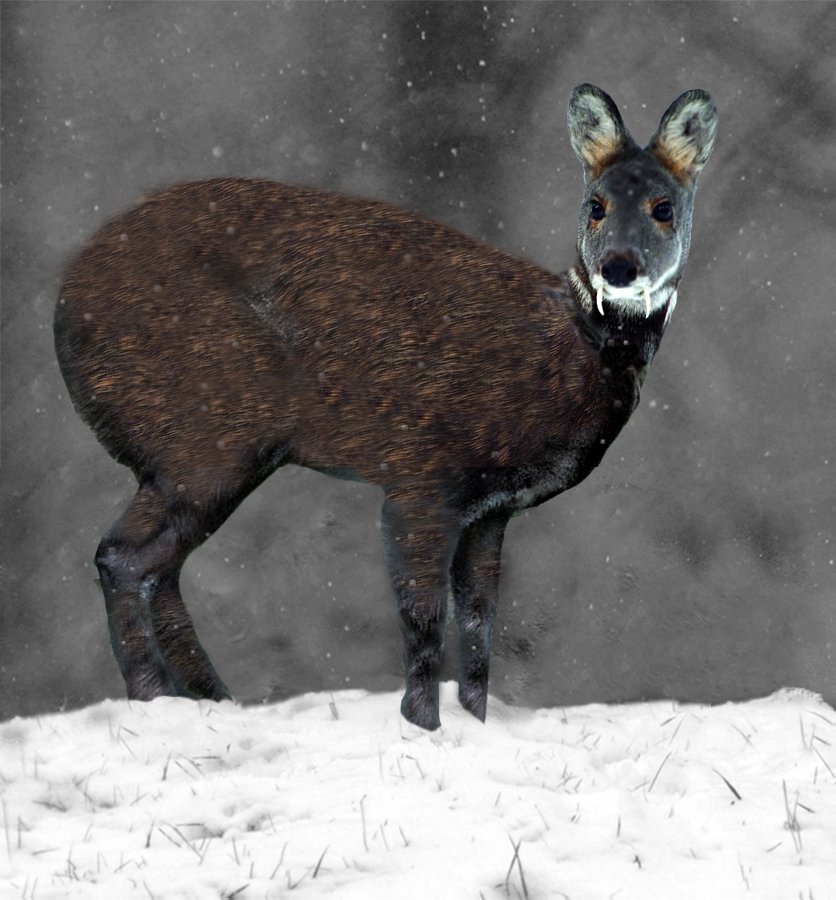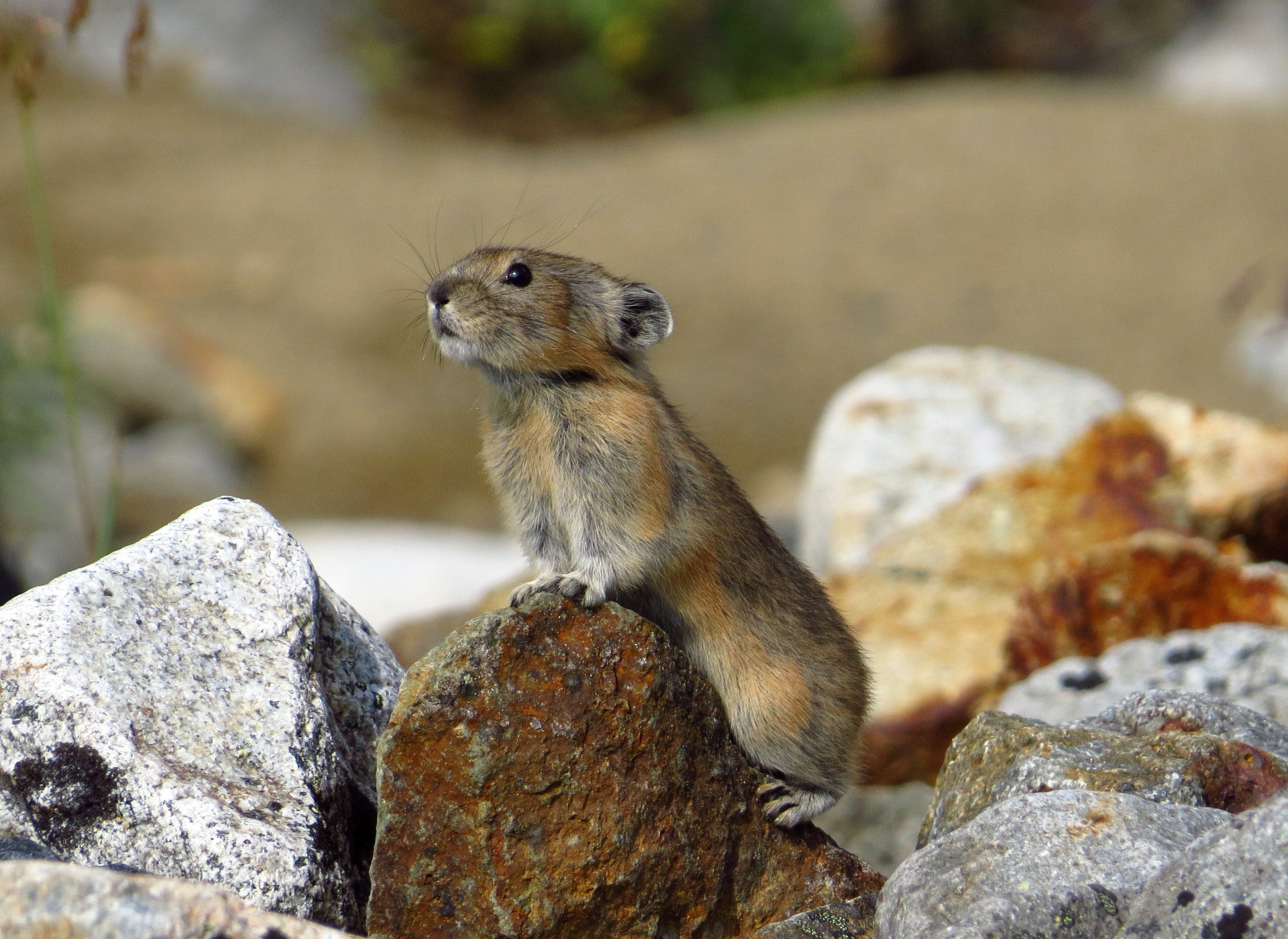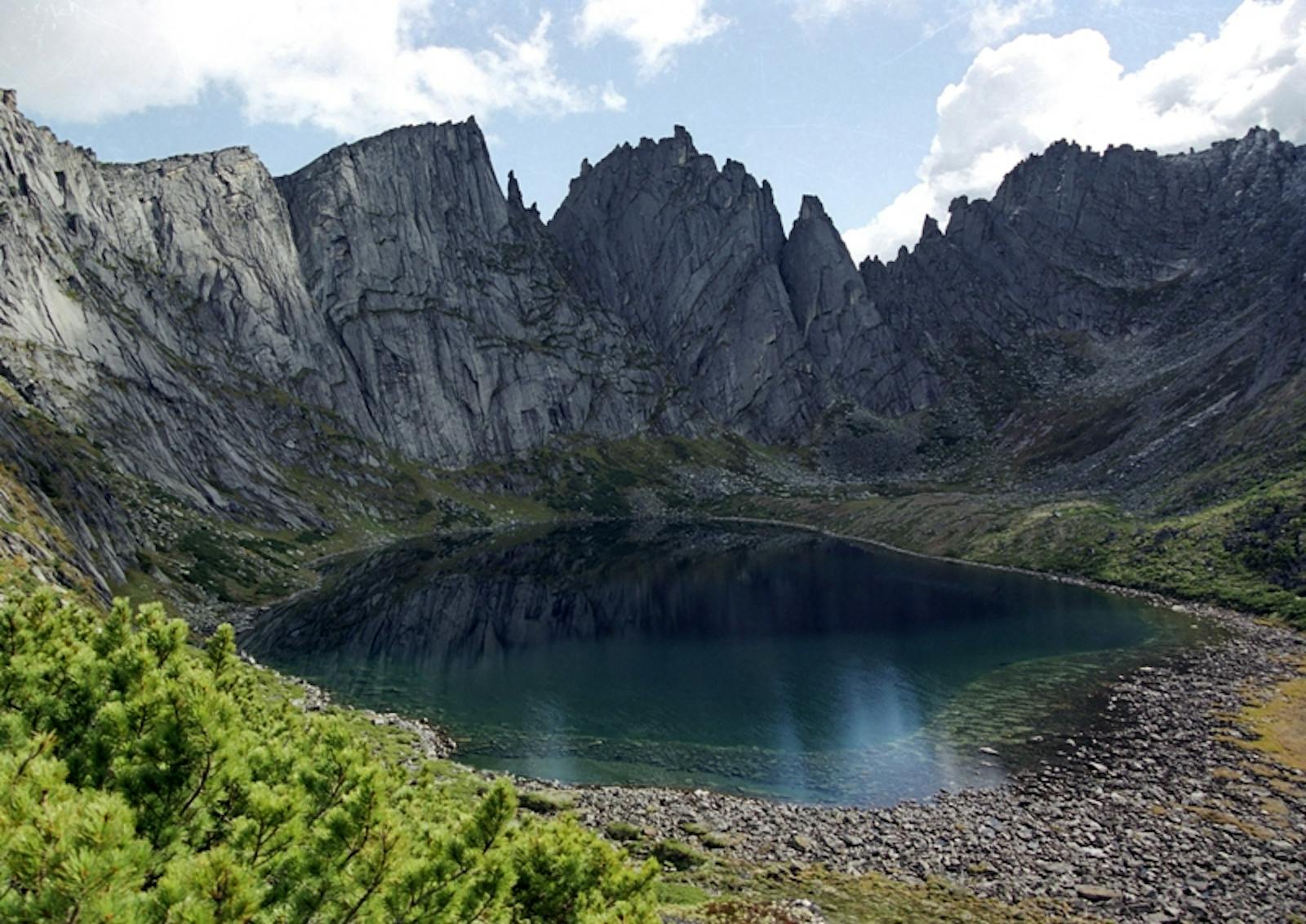Trans-Baikal Bald Mountain Tundra
The ecoregion’s land area is provided in units of 1,000 hectares. The conservation target is the Global Safety Net (GSN1) area for the given ecoregion. The protection level indicates the percentage of the GSN goal that is currently protected on a scale of 0-10. N/A means data is not available at this time.
Bioregion: Siberian Boreal Forests & Mountain Tundra (PA7)
Realm: Subarctic Eurasia
Ecoregion Size (1000 ha):
21,808
Ecoregion ID:
782
Conservation Target:
88%
Protection Level:
1
States: Russia
High above the taiga forests of East Siberia and Okhotsk, the Trans-Baikal Bald Mountain Tundra ecoregion contains a pristine, fragile “goltsy” zone of lichen and moss clinging to large areas of stone and rock. Winds are strong, and snow is blown away before it can settle. Low-growing mountain tundra and patches of meadow with bright flowers host species such as snow sheep, northern pika, golden eagle, alpine accentor and willow grouse. Musk deer and reindeer venture up the mountainsides to graze, followed by grey wolves and wolverines.
.%20Wolverine%20standing%20on%20a%20rock.%20Image%20credit%20Dennis%20Jacobson%20Dreamstime.jpg)
The flagship species of the Trans-Baikal Bald Mountain Tundra ecoregion is the wolverine. Image credit: Matthias Kabel, Creative Commons
This ecoregion is located along a chain of mountaintops running from the northern edge of Lake Baikal to the coast of the Okhotsk Sea—a series of islands amongst the East Siberian and Okhotsk-Manchurian taiga that form a trans-Siberian route for plant dispersion. From west to east, mountains include the Barguzin, Kodar, Stanovoy, Aldan, Dzhugzhur, and Bureya ranges.
The climate is strongly continental, except in the far east of the ecoregion, which is influenced by coastal conditions. In Kodar, the average monthly temperatures are -30°C–16°C and annual precipitation is 350–1,200 mm. On the Okhotsk coast, average monthly temperatures are -20°C–12°C and annual precipitation 364 mm, most of which falls from May to November. Inland, temperature inversions can occur, with lower air temperatures in valleys and lowlands than in the highlands. The Siberian anticyclone in winter means snow cover does not exceed 30 cm.
Above the taiga tree-line is a belt of dwarf trees and shrubs known as “stlanik”, with species such as dwarf Siberian pine, Siberian alder, bog biberry, Betula fruticosa, and Rhododendron aureum. Above this, mountain tundras have Bellardi bog sedge, eightpetal mountain-avens or white dryad, white arctic mountain heather, pincushion plant, Rhododendron redowskianum, and blue mountain heath.
Patches of high meadow have cold-tolerant species such as Alpine yellow violet, hairyflower bellflower, Trollius asiaticus, Angelica saxatilis and Rheum compactum. Wet areas have sedge (Carex sochaveana), moss and cottongrass tundra. At the top of the mountains, the “goltsy” consists of large areas of rock and stones. Mosses such as bendy heron’s-bill moss and hoary rock moss, and fruticose lichens such as gray reindeer lichen, green witch's hair, crinkled snow lichen, and rimmed camouflage lichen grow in more sheltered spots. Black rock moss and crustose lichen species blistered rock tripe lichen, concentric ring lichen, yellow map lichen, and Ophioparma ventosa form thin layers on exposed rock.

Siberian musk deer. Image credit: Erik Adamsson, Creative Commons
Agile snow sheep live above 2,000 m, grazing the meadow and tundra. Siberian musk deer inhabit the stunted forests of the stlanik belt, feeding on lichen, particularly in winter. They have warm coats and cope well with walking through snow. Forest reindeer also move up to mountaintops in summer to feed on the tundra. Where these animals go, Eurasian lynx, grey wolf, and wolverine follow, the latter having vast home ranges where they rely on a combination of hunting and scavenging. Northern pika live amongst the rocks, using the patches of meadow to construct hay pile food stores. Mountain birds such as golden eagle, willow grouse, and alpine accentor nest above the tree line.
Undisturbed by human development, much of the ecoregion is considered pristine. Part of the Barguzin Mountain area is included in the Lake Baikal World Heritage Site. Other protected areas include Bureinsky and Dzhugdzhursky Zapovedniks, and Ungra and Charuoda Reserves, but information is scarce and resources minimal. Dzhugdzhursky was reported as having no staff and no funds to construct an office or living quarters.

Northern Pika. Image credit: Yuri Emelyanov, Creative Commons
Exploitation of the El'ginsky coal deposits near Lake Bolshoe Tokko is expected to cause considerable ecological damage. Climate change induced temperature increases are occurring, and larch forests are predicted to encroach on higher altitudes where soils allow, reducing the area of mountain tundra.
The priority conservation actions for the next decade will be to: 1) increase and fund protected areas, with connectivity between patches; 2) prevent pollution and habitat loss due to coal mining; and 3) research and monitor vegetation and animal behavior changes in response to climate change.
Citations
- Talbot, S., Charron, T., Barry, T. eds. 2010. Proceedings of the Fifth International Workshop: Conservation of Arctic Flora and Fauna (CAFF) Flora Group. Circumboreal Vegetation Mapping (CBVM) Workshop, Helsinki, Finland, November 3-6th, 2008. CAFF International Secretariat, CAFF Flora Expert Group (CFG), CAFF Technical Report No. 21. [Online]. [Accessed 9 January 2020]. Available from: https://www.caff.is/proceedings-series/67-cfg-cbvm-fifth-international-workshop-proceedings-helsinki-finland-november-3-6
- Isaev, A.P., Protopopov, A.V., Protopopova, V.V., Egorova, A.A. Timofeyev, P.A., Nikolaev, A.N., Shurduk, I.F., Lytkina, L.P., Ermakov, N.B., Nikitina, N.V., Efimova, A.P., Zakharova, V.I., Cherosov, M.M., Nikolin, E.G., Sosina, N.K., Troeva, E.I., Gogoleva, P.A., Kuznetsova, L.V., Pestryakov, B.N., Mironova,S.I., and Sleptsova, N.P. 2010. Vegetation of Yakutia: Elements of Ecology and Plant Sociology. In: Troeva, E.I., Isaev, A.P., Cherosov, M.M. and Karpov, N.S. eds. The Far North: Plant Biodiversity and Ecology of Yakutia. Dordrecht: Springer. pp. 143-260.
- Joint Research Centre of the European Commission. 2020. The Digital Observatory for Protected Areas (DOPA) Explorer 4: Trans-Baikal Bald Mountain Tundra. [Online]. [Accessed 9 January 2020]. Available from: https://dopa-explorer.jrc.ec.europa.eu/ecoregion/81112

.png?auto=compress%2Cformat&w=300)

